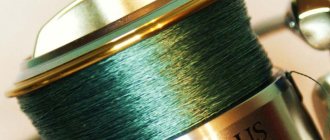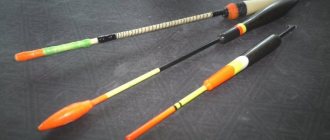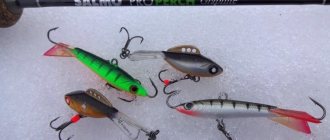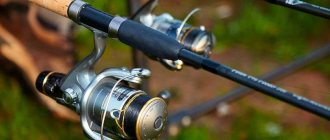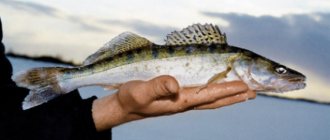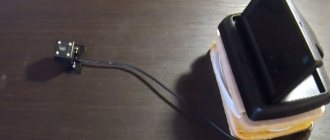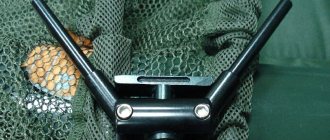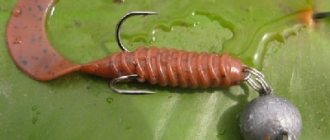In winter fishing, a good catch often depends on the ability to attract inactive prey to the hole.
For this it is important to make a special bait.
Many species of fish feed in winter, although not as actively as in the spring-autumn period. Freshwater inhabitants such as roach, bream, and crucian carp spend the cold season in large schools. So if you find a promising place for ice fishing, and then keep the fish under the hole, the result can be very good.
In each reservoir, local inhabitants have their own feeding preferences. Some of them were developed thanks to fishermen who, over decades, have accustomed potential prey to certain baits. That is why it is not always possible to find a composition in the store that will interest picky fish. In this case, you can only rely on your culinary abilities, as well as on the wise recommendations of local residents. Let's consider several interesting options for homemade bait for winter fishing.
Winter bait for roach.
- Take a glass of store-bought bait as a base. Buy summer bait for roaches. The price should not be lower than 100-120 rubles. Winter mixtures can be used. But they are not as flavored as the summer ones.
- The second ingredient will be semolina. You need to add one to a third of a glass of semolina.
- The third component that needs to be added to the bait will be breadcrumbs. Cooking breadcrumbs contain yeast and salt. And if yeast does not play a special role, then salt is very important. Salt itself attracts fish. Experienced fishermen know this very well. And salt also allows the bait not to freeze in the cold. Add also one to a third of a glass of breadcrumbs.
- You will also need ground red paprika. It gives off a very subtle aroma. You don't need a lot of paprika, half a teaspoon will be enough.
- Well, the last component will be regular fried seeds. You can buy them at the store or fry them yourself. After roasting, the seeds must be ground in a blender or meat grinder. But from personal experience it is better to do this in a meat grinder. This makes them smaller. The task is difficult, but interesting. You might even like it (though I doubt it). Add one to a third cup of sunflower seeds. But even more is possible. The benefits of seeds are quite large. They provide an aroma that attracts fish.
- The bait is almost ready. All that remains is to mix the contents thoroughly.
Not a big secret. After you have mixed the bait, put the mixture in the microwave for a couple of minutes. The microwave should be at maximum power.
Full video review of preparing bait for catching roach. And why put the prepared mixture in the microwave? You can find out from the video below.
Features of winter feeding on the river
Why has bait been very rarely used on the river in winter since ancient times? On many rivers, even along the old rivers, where the best lake fishing takes place, they rarely feed. What is it, just “bearded” traditions or well-thought-out tactical strategies?
I myself am a river fisherman, and for many years I have not fed on the river in winter. And there is a clear explanation for this. The essence of river winter fishing is the prompt search for active fish, because an active search for passive schools is nonsense; inactive fish are simply hatched. But considering that even with a very bad bite on the river there are always active leucorrhoea specimens somewhere, this particular tactic is the most promising - “active search for active schools.” That is, “peck” like a woodpecker here and there, showing agility and perseverance, without losing faith in success.
On the river, the linen hunter's legs are fed like a wolf. This is clearly visible in the popular pull-up. It most clearly shows the futility of river feeding - purely technically and tactically, it makes no sense, so none of the fans of pull-up fishing feeds fish. The lines on powerful jets are long, the food bloodworm (or other food) will be carried away to an unknown location, it is much easier to move when going to the fish, change places more often. Some fishermen try to feed with bloodworms in a small pull in a weak current, but this topic, apparently, is not being developed. All this is true, but on the other hand, in the summer they feed river points, be healthy! And the fish gathers, stays on bait, and is caught perfectly. So what is the dog buried in, simply in the reluctance to feed in winter? After all, river fishing is not just about fishing. There is also fishing for the same bream with donks in the current. And a heavy jig is in no way inferior to a pull-up, and often catches it completely. Or maybe many rivermen feed quietly, carefully hiding it? I remember I went out onto the ice to wet my jigs at the exit of a river backwater. I drilled holes in a moderate current, checked everything - there was no bite. Then he dug up someone’s old hole, and a crowd of 150-300 grams of bream fell on the bloodworm. And the bites are all confident, the kind that usually happens when you run into a dense school. And why did these breams gather so tightly at this point? While taking another fish off the hook, I inadvertently pressed on its belly, squeezing out... boiled barley! It turns out someone fed this place last night or early this morning!
Read: Feeding on a big river
Some winter residents prefer to feed liquid complementary foods. They stuff all kinds of edible food into a suitable plastic bottle, including black bread, and add water to achieve the consistency of liquid porridge. They fish at shallow depths, from time to time pouring a small portion of bait directly from the bottle into the hole. In the stagnant water of the old river, a column of bait is formed, along which the fish move up and down. In a moderate current there is a muddy strip of food along which the fish are pulled closer to the hole.
Over the last couple of years, I myself have also been experimenting with river bait. Successful results, for the most part, are observed during thaws, when, having swallowed some melt water, the fish rush around in search of food. But it is clearly not a school animal; no more than two or three tails are snatched from one hole. In such a situation, you can roll up your sleeves and drill wide, taking a couple of fish from a dozen holes. But it is more appropriate to feed the “holes” that you particularly like, and if the fish is nearby, it can actively run towards me. Finely ground bait works in different ways in winter – good store-bought bait, and crackers with seeds. I don’t use the feeder either in standing water or in moderate currents, dropping the food directly into the hole. I just try not to make a mistake with the consistency. If you don’t add water, the food will crumble right in the hole, and you’ll have to catch the floating flakes of porridge... If you overfill the water, the mixture will fall to the bottom like a piece of plasticine, which is even worse. The best thing is when the lure goes down in a lump, releasing bubbles, and when it hits the bottom, it disintegrates. After feeding, it is promising to work with a jig from top to bottom, because when a lump of food falls, light particles fly off from it, falling very slowly. This turns on the fish, and they are much better caught when lowering the jig. It happened that in this way I snatched up to a dozen tails in different water horizons, without ever bringing the bait to the bottom, without even knowing what the depth was. I start to jig at the bottom only when there are no bites in the water column.
Read: Catching a goat and a devil
I noticed that with bait the fish clearly became bolder and could be caught with almost any jig, even with fairly coarse tackle. But without fanaticism. If you have created good conditions for yourself by collecting fish under the hole, then it would be a sin not to take advantage of all the opportunities. Including well-tuned tackle with a suitable fishing line that does not have an extra margin of safety. There are more bites on such a vein, they are more confident and are better implemented.
In general, I was convinced that even on a winter river, vegetable bait is sometimes very appropriate and can really improve the results. At the same time, there is still no “equality” with lake fishing. Why? Perhaps due to the fact that the bait in the current works only in a narrow strip. Yes, fish can come along it from afar if you stand on this stream. But most likely it will not come when it stays on its neighbors - it does not like to change its favorite water streams in winter. It also happens that fish do not want to gather in a dense school, even consisting of individuals of the same species. Usually events develop like this: he came, drilled several holes, fed them, soon caught several tails, and the holes became quiet, an hour has already passed, but nothing happens. Has the flock been caught? Couldn't resist the bait spot and left? Or were the active individuals caught and the rest became cautious? Who knows, you can’t ask the fish. But in any case, staying on these well-fed holes simply means chaining yourself to an area that is obviously unpromising. I’ll probably check it again during the day, but now it’s better to leave it and look for a more promising place.
As for bait, when catching bream and other large whitefish, a bunch of bloodworms works great - an armful, as fishermen sometimes put it. It would seem that it would be simpler, hook “as much as you can” and there will be happiness. But not everything is so simple! The larger the linen, the less often it bites, and the bloodworms flow out quickly enough, and only one “washcloth” remains on the hook, but it does not want to take it. It happens that there are good bites on a bunch that was dented by the previous bite, that is, I took out a bream, and again I throw this “snotty” bunch of bloodworms into the hole - a bite is more likely on it than on fresh bait. Although this does not always happen, and the fish often only wants a fresh armful of bloodworms. Accordingly, you have to frequently refresh the bait, taking out the tackle, scaring away the fish and wasting precious feeding time. In any case, if there are no bites for a long time, the very first thing that is beneficial to do is to change the bait to a fresher one. The best option is armfuls of bloodworms, 6-7 pieces each, intercepted in the middle with a ring of nipple rubber, to which the hook clings. This ancient technique, these days, has been half-forgotten by many fishermen, but in vain - the bait remains mobile for a very long time, which perfectly attracts large fish. In addition, a bunch of bloodworms in an elastic band allows you to use stronger hooks made of thick wire, which allows you to confidently fish for the largest bream. If you bait bloodworms traditionally - with a puncture, then you cannot do without thin hooks, otherwise the larvae will leak out during the baiting process.
Read: How to catch grayling in winter
A worm also works well on a winter river, especially during thaws. A good option is a medium-sized dung beetle attached like an accordion, but even better is a bunch of small ones, a bunch of 3-4 pieces. When catching scattered fish, sandwiches are also good: a bunch of bloodworms plus maggots or a worm plus a couple of burdocks. But when a flock approaches, the benefits of sandwiches disappear. Apparently, fish in a school, with fairly high food competition, behave aggressively, they don’t care about these sandwiches. For large individuals who feed slowly, a sandwich with a white component in the form of maggot or burdock is more visible at the bottom.
How to store bloodworms.
I want to tell you a couple of ways to store bloodworms. The methods are not new and have been known for quite some time. But for novice fishermen they may be useful.
Method No. 1.
Bloodworms are stored in water, in some kind of jar. It is necessary that it be in the cold (a refrigerator is very suitable). And now more details...
Take two plastic containers of different sizes. It is best if they are round in shape and have threaded lids. In a container with a smaller diameter, make holes on the sides. We will put bloodworms in it. And pour water into a large container. Now fasten the two lids together.
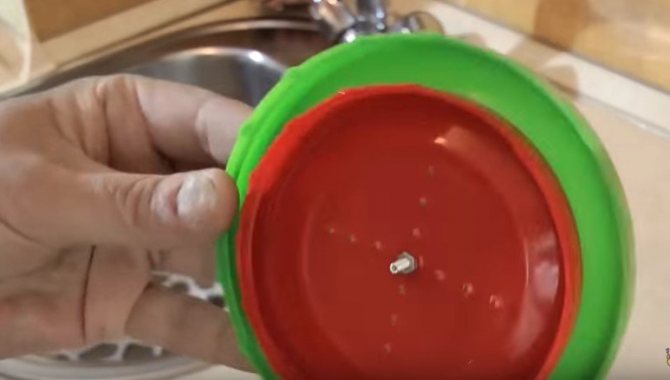
Screw on the lid of the small container and place it in the large one. Close the big one with a lid.
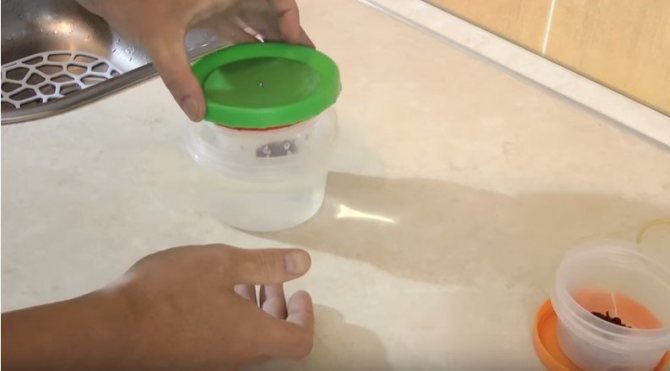
This way the bloodworm is obtained in the water and is easy to remove.
There is no need to pour water from the tap right away. Give it a day to brew.
The water needs to be changed about 2-3 times a week. In this way, bloodworms can be stored for up to 50 days.
Photos of bait for winter fishing
Read here Winter fishing line - the best fishing lines for winter fishing and assessment of fishing line strength (115 photos + video)
Help the project, share on social networks 

0
